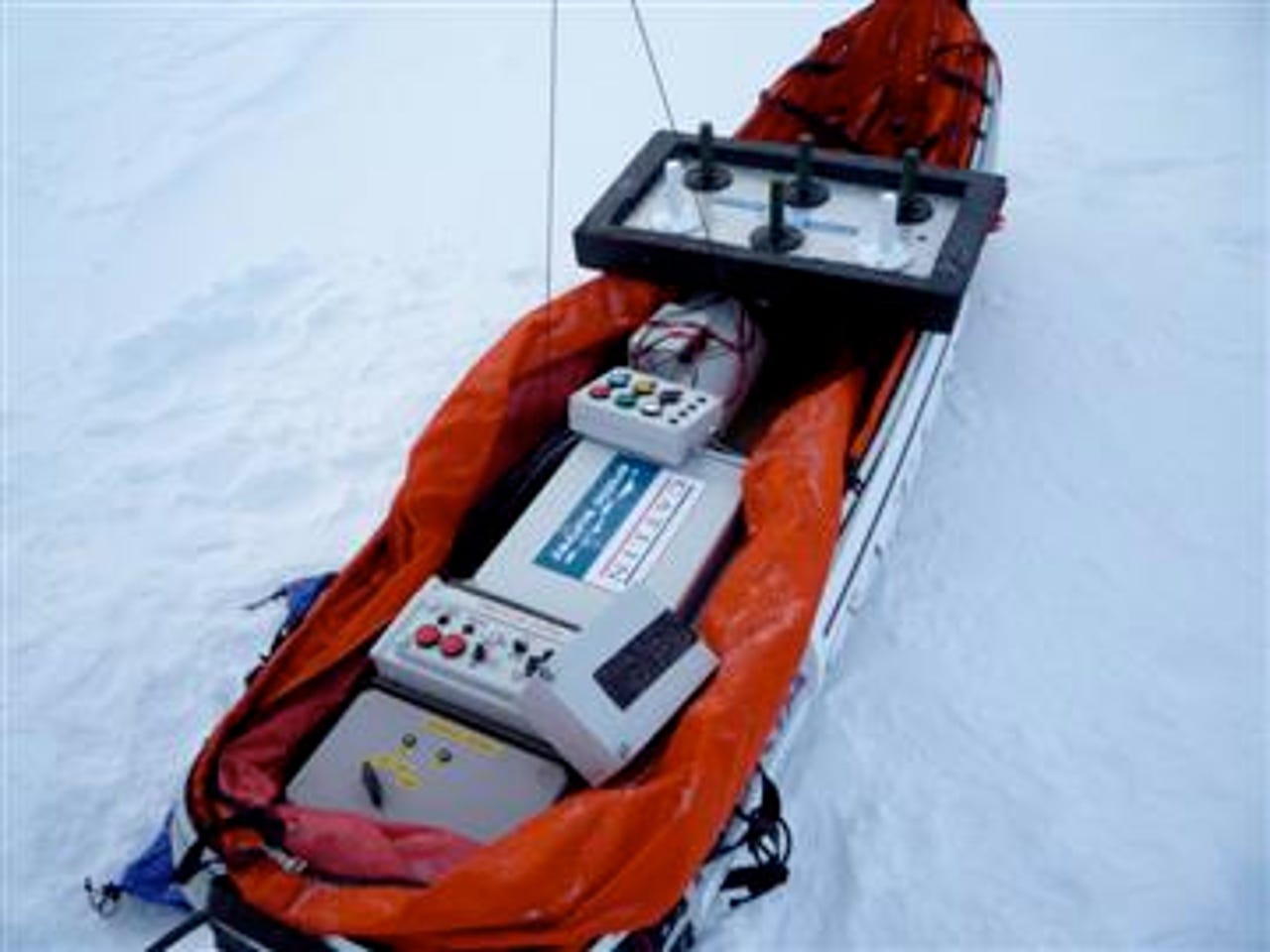Photos: Tech cracks the Arctic frontier


Expedition to the North Pole gets cutting edge kit
Explorers are relying on cutting edge technology to map the retreating Arctic ice sheet during a treacherous 1,000km trek to the North Pole.
During the 90-day Catlin Arctic Survey, three seasoned explorers, led by Pen Hadow, will rely heavily on technology for everything from mapping ice levels to relaying their vital signs back to the UK HQ.
During the trek, which began last month, telecoms equipment able to withstand the Arctic's sub-zero temperatures will allow the expedition to relay video streams, live audio commentaries, high definition stills and the explorers' vital signs to the rest of the world.
The Central Data Unit or Onboard Sledge Computer, seen here amid other tech kit, is ruggedised, custom-built equipment, which couples a computer to a multi-modem data uplink system that connects to the Iridium satellite network.
The system transmits data on a live, delayed live or overnight basis.
This yellow box is the Sprite radar system, which stands for Surface Penetrating Radar for Ice Thickness Establishment.
The system will take millions of measurements of the thickness of the remaining Arctic ice, assessing its density and the depth of the overlying snow.
This data, combined with weather and sea temperature readings, will give vital evidence of how fast global warming is melting the Arctic ice - providing insights into the speed of climate change, the rate that sea levels are rising and the future of Arctic wildlife.
The trek will also shed light on how humans cope in extreme conditions, thanks to the Equivital physiological monitoring systems strapped to the explorers' chests, as seen on Hadow here.
Sensors in the Equivital belt will measure the heart rate, respiration rate and effort, skin temperature and body orientation of the team.
Team members have also swallowed a 'core pill' that sits in the intestines. The pill contains a miniature temperature sensor, battery and radio transmitter, and communicates core body temperature readings to the Equivital unit.
This information is sent back to the team's UK HQ via the Central Data Unit and can be viewed on the expedition website, allowing the public to monitor the vital signs of the team during the trek.
Here holes are drilled into the Arctic ice to insert a custom made SeaCat probe, which measures temperature, depth and salinity up to 300 metres below the surface.
The probes take measurements four times per second and relays the data back to the onboard sledge computer - producing temperature readings accurate to one-thousandth of a degree celsius.
The readings will allow scientists to compare the regional changes in the ocean in the Arctic basin.
The team can communicate between themselves and the UK HQ using a three-way hands-free voice comms system.
The design of this three-way communication system also allows conference calls to be established and live commentaries to be fed through the website.
Hadow's sledge also contains a speech archive system that will record all communications on the trek.
Each ice team member has a throat microphone and single earpiece, with cabling being routed inside the outer garment.